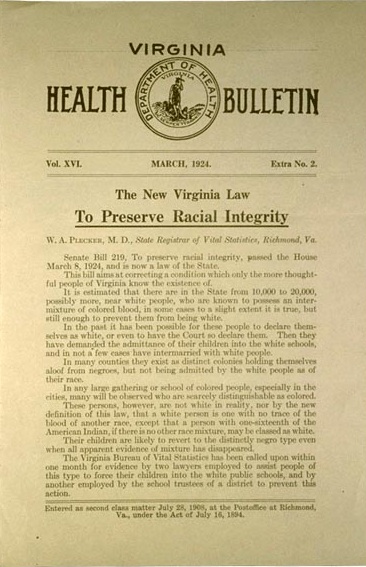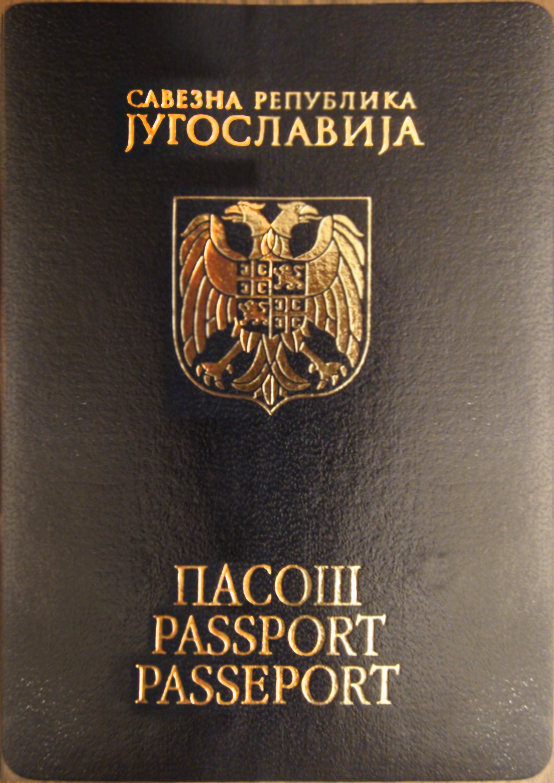|
Memoricide
Memoricide is the destruction of the memory, extermination of the past of targeted people. It also refers to destruction of the traces (such as religious buildings or schools) that might recall the former presence of those considered undesirable. Memoricide is used in support of ethnic cleansing. Since memoricide refers to intentional attempts to erase human memory about something, it usually takes the form of destruction of physical property. The term was coined by Croatian doctor Mirko Grmek in a text published in ''Le Figaro'' on 19 December 1991. Allegations of memoricide According to some accounts memoricide was employed by Greece toward Macedonians of Slavic origin. The dissident historian Ilan Pappe deployed the concept of cultural memoricide as systematic attempt of post-1948 Israel in relation to Palestine. Also, the Spanish historian Jorge Ramos Tolosa has used this term in the context of the Zionist- Israeli practices in Palestine. Grmek used the term to describe ... [...More Info...] [...Related Items...] OR: [Wikipedia] [Google] [Baidu] |
Ethnic Cleansing
Ethnic cleansing is the systematic forced removal of ethnic, racial, or religious groups from a given area, with the intent of making the society ethnically homogeneous. Along with direct removal such as deportation or population transfer, it also includes indirect methods aimed at forced migration by coercing the victim group to flee and preventing its return, such as murder, rape, and property destruction. Both the definition and charge of ethnic cleansing is often disputed, with some researchers including and others excluding cultural genocide, coercive assimilation or mass killings as a means of depopulating an area of a particular group, or calling it a euphemism for genocide or cultural genocide. In 21st century Europe, the term ''remigration'' has been used for similar policies. Although scholars do not agree on which events constitute ethnic cleansing, list of ethnic cleansing campaigns, many instances have occurred throughout history. The term was first used to descri ... [...More Info...] [...Related Items...] OR: [Wikipedia] [Google] [Baidu] |
Cultural Genocide
Cultural genocide or culturicide is a concept first described by Polish lawyer Raphael Lemkin in 1944, in the same book that coined the term ''genocide''. The destruction of culture was a central component in Lemkin's formulation of genocide. The precise definition of ''cultural genocide'' remains contested, and the United Nations does not include it in the definition of ''genocide'' used in the 1948 Genocide Convention. The Armenian Genocide Museum defines culturicide as "acts and measures undertaken to destroy nations' or ethnic groups' culture through spiritual, national, and cultural destruction", which appears to be essentially the same as ethnocide. Some ethnologists, such as Robert Jaulin, use the term '' ethnocide'' as a substitute for ''cultural genocide'', although this usage has been criticized as risking the confusion between ethnicity and culture. Cultural genocide and ethnocide have in the past been utilized in distinct contexts. Cultural genocide without et ... [...More Info...] [...Related Items...] OR: [Wikipedia] [Google] [Baidu] |
Peace Review
''Peace Review'' is a quarterly peer-reviewed academic journal published by Routledge and covering peace and conflict studies. It was established in 1992 by John Harris (Stanford University), although the editorship was soon assumed by Robert Elias (University of San Francisco The University of San Francisco (USF) is a Private university, private Society of Jesus, Jesuit university in San Francisco, California, United States. Founded in 1855, it has nearly 9,000 students pursuing undergraduate and graduate degrees ...). Katerina Standish, Director of the Arthur V. Mauro Institute for Peace & Justice Studies at St. Paul’s College, University of Manitoba, has been Editor-in-Chief since 2021. External links *{{official website, http://www.usfca.edu/artsci/peace_review/ Peace and conflict studies Political science journals Academic journals established in 1992 Quarterly journals Routledge academic journals ... [...More Info...] [...Related Items...] OR: [Wikipedia] [Google] [Baidu] |
Columbia University Press
Columbia University Press is a university press based in New York City New York, often called New York City (NYC), is the most populous city in the United States, located at the southern tip of New York State on one of the world's largest natural harbors. The city comprises five boroughs, each coextensive w ..., and affiliated with Columbia University. Founded in 1893, it is currently directed by Jennifer Crewe (2014–present) and publishes titles in the humanities and sciences, including the fields of literary and cultural studies, history, social work, sociology, religion, film, and international studies. History Columbia University Press was founded in May 1893. In 1933, the first four volumes of the ''History of the State of New York'' were published. In the early 1940s, the Press' revenues rose, partially thanks to the ''Encyclopedia'' and the government's purchase of 12,500 copies for use by the military. Columbia University Press is notable for publishing r ... [...More Info...] [...Related Items...] OR: [Wikipedia] [Google] [Baidu] |
Routledge
Routledge ( ) is a British multinational corporation, multinational publisher. It was founded in 1836 by George Routledge, and specialises in providing academic books, academic journals, journals and online resources in the fields of the humanities, behavioral science, behavioural science, education, law, and social science. The company publishes approximately 1,800 journals and 5,000 new books each year and their backlist encompasses over 140,000 titles. Routledge is claimed to be the largest global academic publisher within humanities and social sciences. In 1998, Routledge became a subdivision and Imprint (trade name), imprint of its former rival, Taylor & Francis, Taylor & Francis Group (T&F), as a result of a £90-million acquisition deal from Cinven, a venture capital group which had purchased it two years previously for £25 million. Following the merger of Informa and T&F in 2004, Routledge became a publishing unit and major imprint within the Informa "academic publishing ... [...More Info...] [...Related Items...] OR: [Wikipedia] [Google] [Baidu] |
Paper Genocide
Paper genocide is the systemic removal of a group of people from historical records, such as censuses, which gives the impression that that group has disappeared or become extinct. A 2023 article published by Cultural Survival defines the term as "intentional destruction of documents and records related to a particular group of people, usually with the intent of erasing their histories and cultures", while a 2019 article in ''National Geographic'' characterizes the term thusly: "Paper genocide means that a people can be made to disappear on paper". The term is often used to refer to government policies regarding Native Americans in the United States and the indigenous peoples of the Caribbean, primarily the Taíno. According to Cultural Survival, paper genocide can lead to Transgenerational trauma, generational and historical trauma for the communities affected. Examples Taíno and indigenous peoples of the Caribbean A common example of a paper genocide is that of the Taí ... [...More Info...] [...Related Items...] OR: [Wikipedia] [Google] [Baidu] |
Identity Cleansing
Identity cleansing is defined as "confiscation of personal identification, passports, and other such documents in order to make it difficult or impossible for those driven out to return". Kosovo War During the Kosovo War in the Federal Republic of Yugoslavia (FRY), expelled Kosovo Albanians were systematically stripped of identity and property documents including passports, land titles, vehicle registration plates, identity cards and other documents. In conjunction with the policy of expelling Kosovo Albanians from the province, Yugoslav Army would confiscate all documents that indicated the identity of those being expelled. Physicians for Human Rights (PHR) reports that nearly 60% of respondents to its survey observed the Yugoslav Army removing or destroying personal identification documents. Human Rights Watch (HRW) also documented the common practice of "identity cleansing"; refugees expelled toward Albania were frequently stripped of their identity documents and forced to r ... [...More Info...] [...Related Items...] OR: [Wikipedia] [Google] [Baidu] |
Forced Assimilation
Forced assimilation is the involuntary cultural assimilation of religious or ethnic minority groups, during which they are forced by a government to adopt the language, national identity, norms, mores, customs, traditions, values, mentality, perceptions, way of life, and often the religion and ideology of an established and generally larger community belonging to a dominant culture. The enforced use of a dominant language in legislation, education, literature, and worship also counts as forced assimilation. Unlike ethnic cleansing, the local population is not outright destroyed and may or may not be forced to leave a certain area. Instead, the assimilation of the population is made mandatory. This is also called ''mandatory assimilation'' by scholars who study genocide and nationalism. Mandatory assimilation has sometimes been made a policy of new or contested nations, often during or in the aftermath of a war. Some examples are both the German and French forced ass ... [...More Info...] [...Related Items...] OR: [Wikipedia] [Google] [Baidu] |
Desecration Of Graves
The desecration of graves involves intentional acts of vandalism, theft, or destruction in places where humans are interred, such as body snatching or grave robbing. It has long been considered taboo to desecrate or otherwise violate graves or grave markers of the deceased, and in modern times it has been prohibited by law. Desecration is defined as violating something that is sacred. History Theft One form of grave desecration is grave robbery. In Egypt many of the tombs in the Valley of the Kings were robbed and looted of valuables. Papyrus scrolls from 2000 BC detail accounts of looting. The accounts also spell out the punishment that thieves received. The sentence varied from the removal of the thief's ears or nose. One punishment was execution. The 3rd century Chinese text ''Lüshi Chunqiu'' advised mourners to plan simple burials to discourage looting. Many Chinese were buried with valuables, including jade burial suits. In modern China, grave robbing continues. Body sna ... [...More Info...] [...Related Items...] OR: [Wikipedia] [Google] [Baidu] |
Yimakh Shemo
() is a Hebrew curse placed after the name of particular enemies of the Jewish people, or on rare occasions, after the name of evildoing Jews. A variant is (). Usage The term, although Hebrew, may be inserted as a set phrase in languages other than Hebrew, including Yiddish, for example, "''Dos iz a kol-boynik, yemakh-shmoy!''" ("He is a scoundrel, ''yemakh-shmoy''!") and English. When the phrase is used in English of plurals the Hebrew plural ''-am'' ("their names and their memories" ''yimach shemam ve-zichram'') is applied. The epithet may be abbreviated as "Y. S." in some English texts. In Hebrew the abbreviation is () The curse connects with examples of erasure of names in other cultures. It has been called "the classic Jewish curse". Biblical origin: Psalms Haman and Amalek The phrase has its origins in Psalm 109 verse 13. 13 May his end be to be cut off; in another generation may their name be blotted out. יגיְהִֽי־אַֽחֲרִית֥וֹ לְהַכְרִ֑י ... [...More Info...] [...Related Items...] OR: [Wikipedia] [Google] [Baidu] |
List Of Destroyed Heritage
This is a list of cultural heritage sites that have been damaged or destroyed accidentally, deliberately, or by a natural disaster. The list is sorted by continent, then by country. Cultural heritage can be subdivided into two main types: tangible and intangible cultural heritage, intangible. Tangible heritage includes built heritage (such as religious buildings, museums, monuments, and archaeological sites) and movable heritage (such as works of art and manuscripts). Intangible cultural heritage includes customs, music, fashion, and other traditions within a particular culture. This article mainly deals with the destruction of built heritage; the destruction of movable collectible heritage is dealt with in art destruction, whilst the destruction of movable industrial heritage remains almost totally ignored. The deliberate and systematic destruction of cultural heritage, such as Destruction of cultural heritage by the Islamic State, that carried out by ISIL and other terrorist ... [...More Info...] [...Related Items...] OR: [Wikipedia] [Google] [Baidu] |





